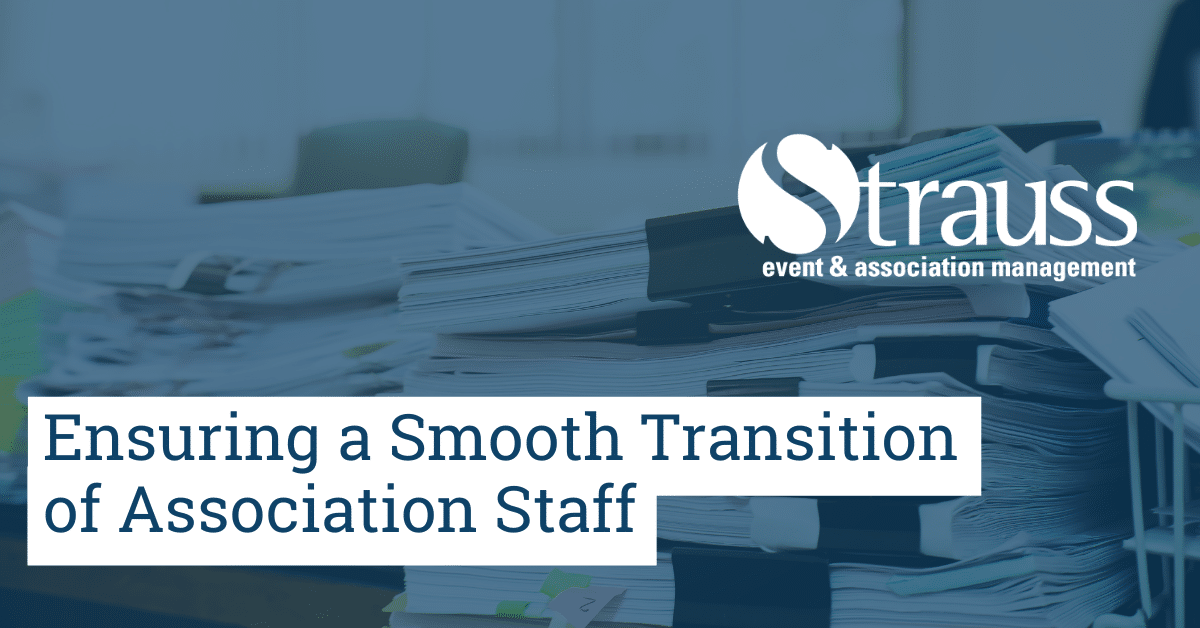In the association world, executive directors/Chief Staff Officers come and go. Sometimes it does not make sense to continue a relationship with an Executive Director for a variety of reasons and other times an association realizes the potential for excellence by making a change. In this article I’ll be touching on the most important part of this process, the transition, because no matter what the circumstance, a smooth transition is paramount.
Accomplish a smooth transition with full cooperation from all parties involved. The idea is to stay as adaptable as possible to ensure all parties are comfortable and the stakeholders of the association do not notice a change in service – or at least not a decline in service.
How to Create the Perfect Environment for a Smooth Association Transition
Once you’ve signed the contract and the transition begins, start communicating with all parties involved. That includes the board of directors, the outgoing staff and the incoming staff.
Read this article for more information on clear and concise communication strategies.
Transition In/Out Schedules
I am a huge fan of creating transition out/in schedules and using them as a tool to ensure all parties are aware of their tasks and responsibilities. Use this as a check list to follow up on all responsibilities. The schedule should include:
- A listing of all tasks – typically separated by topic. For example, all tasks that would fall under Finance, or all tasks that would fall under Membership.
- All tasks should be assigned to someone. This could include specific staff members, such as the association’s Accounting Manager, board members, or the outgoing staff.
- All tasks should have a deadline associated with them.
- All tasks should have a comments/notes section that should be updated regularly.
Master Contact/Account Password Worksheet
An additional tool that is very helpful is a worksheet that requests all supplier information and passwords. In banking information, for example, there should be fields to complete for contact information, account numbers, passwords, signatory listings, etc. It is the outgoing staff’s responsibility to complete this worksheet early in the transition process.
Please see this article to learn the Five Organizations You Need to Inform When Your Association Board Members Change.
Schedule Regular Meetings
Regular meetings between the outgoing and incoming staff should occur often. These meetings should touch on the review of the two above mentioned documents as well as be training meetings to share processes and procedures. All parties involved must be “present” and ready to share/receive information at these meetings. Leave all egos and emotions at the door.
Files/Folders Transfer
At Strauss, we use a great file storage system. We are able to create folders and send them to people to fill with files. I recommend creating specific folders and requesting that the outgoing staff fill those specific folders with the files that should be included. I.e. if the folder is called Governance – all board related files should be added to that folder. This is a great way to receive files and to have them somewhat organized as they come in. Also, don’t be surprised if files are in the “wrong” folders. Have staff ready to organize the file system to ensure all documents are easy to find when needed.
See this article about Increasing Efficiency with a Standardized File Structure.
Hard Files
If your association is transitioning to a new staff, request all hard files to come early. This allows for the new staff to review and establish an efficient filing system. It will also help to determine which boxes can be sent to offsite storage (with a file retention timeline associated with them).
Ultimately, receiving files early helps the incoming staff understand the business of the association better. They will be able to ask more constructive questions during the transition as well. The more information the incoming staff receive and are able to review during the transition period will allow for more efficient and effective training sessions.
Reference my colleague’s article, How Good is Your Association Record Keeping for more.
Training Sessions
Training sessions are very important. Staff need to overlap to understand the operations of the association and to ensure a seamless transition for members and the board. I prefer a three-month transition where the first month is the research phase, the second month is the training phase, and the third month is primarily the new association management company doing all of the work – with the ability to regularly ask questions of the outgoing staff.
Complications
Complications will occur. Not everyone will be as receptive and adaptive to change, or as readily available to share information. Stay patient, but always remind all parties of the timelines created to meet the deadlines.
Ultimately, being prepared and communicating well will enable you to have a great transition and help the association in its pursuit of excellence.

